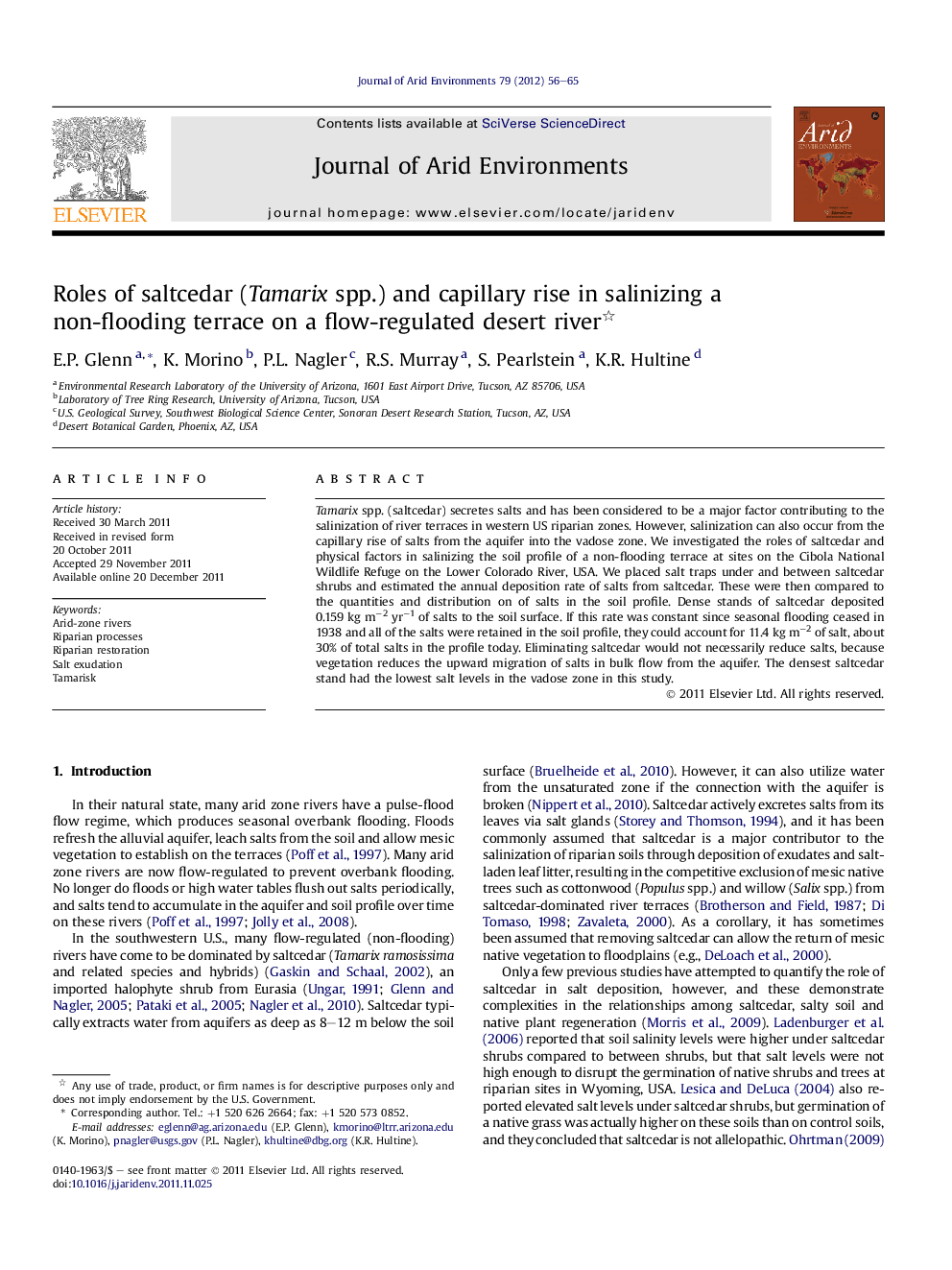| Article ID | Journal | Published Year | Pages | File Type |
|---|---|---|---|---|
| 4393444 | Journal of Arid Environments | 2012 | 10 Pages |
Tamarix spp. (saltcedar) secretes salts and has been considered to be a major factor contributing to the salinization of river terraces in western US riparian zones. However, salinization can also occur from the capillary rise of salts from the aquifer into the vadose zone. We investigated the roles of saltcedar and physical factors in salinizing the soil profile of a non-flooding terrace at sites on the Cibola National Wildlife Refuge on the Lower Colorado River, USA. We placed salt traps under and between saltcedar shrubs and estimated the annual deposition rate of salts from saltcedar. These were then compared to the quantities and distribution on of salts in the soil profile. Dense stands of saltcedar deposited 0.159 kg m−2 yr−1 of salts to the soil surface. If this rate was constant since seasonal flooding ceased in 1938 and all of the salts were retained in the soil profile, they could account for 11.4 kg m−2 of salt, about 30% of total salts in the profile today. Eliminating saltcedar would not necessarily reduce salts, because vegetation reduces the upward migration of salts in bulk flow from the aquifer. The densest saltcedar stand had the lowest salt levels in the vadose zone in this study.
► Saltcedar leaf exudates and litter contribute to soil salinity on non-flooding river terraces. ► Salts also enter the soil from capillary rise of water from the aquifer. ► Removal of saltcedar would not necessarily reduce salt levels. ► Aquifer and soil salt levels can support saltcedar and native halophytes. ► Restoration for mesic vegetation would be difficult without flooding.
